Scott #288 is part of the 1898 Trans-Mississippi Exposition Issue, a commemorative series created to highlight the western expansion of the United States and the role of the Omaha exposition in celebrating economic and territorial development.
The 5-cent denomination was positioned for practical use in both domestic and international mail services where the standard 2-cent and 4-cent values were insufficient. Unlike lower denominations in the set that were used heavily in ordinary correspondence, the 5-cent issue was designed to meet specific higher-rate postal needs, including foreign letter rates and combined services such as registration.
Within the Trans-Mississippi series, this value held significance for its subject matter, which depicted a western exploration theme, connecting directly with the broader historical narrative of frontier development.
Design & Print
The Bureau of Engraving and Printing, which by this period held full responsibility for U.S. stamp production, was tasked with producing Scott #288. The stamp was printed in 1898 with output aligned to expected demand for the 5-cent rate.
It features an engraved vignette portraying explorer John C. Frémont standing among the Rocky Mountains, accompanied by his party. This image reflects the government’s intention to emphasize exploration and the surveying of western territories, central themes of the exposition.
The inscription includes “United States of America” at the top and “Five Cents” spelled out at the bottom of the design. The issue was printed in a dull blue shade, a deliberate color selection that made it distinct from other denominations in the series. The fine detail of the engraving, executed by the Bureau’s experienced engravers, demonstrates the emphasis on both functionality and craftsmanship during the era.
Postal Usage
At the time of release, the 5-cent denomination was closely tied to international postal obligations under Universal Postal Union agreements. A single-rate letter to most foreign destinations required 5 cents, making Scott #288 suitable for such mail. Domestically, it could also be used for letters weighing over the basic two-cent-per-ounce limit, as well as for registered mail services, which often required higher combined rates.
he value filled a critical space in the rate system, ensuring that postal patrons had an efficient means of covering these specific services without overpaying through multiples of smaller denominations. The production of a 5-cent issue within the Trans-Mississippi series underscores the Post Office Department’s intent to balance commemorative design goals with practical usage in the postal system.
Identification
Scott #288 can be identified by several precise characteristics. The color is dull blue, which distinguishes it from the other values in the Trans-Mississippi set, none of which share this shade. The vignette portrays Frémont and his surveying party in the Rocky Mountains, a unique subject not repeated in other denominations.
The words “Five Cents” appear at the base of the stamp, spelled out rather than shown numerically, consistent with the typographic style used across the series. The perforation gauge is 12, standard for Bureau issues of this period.
Specialists look closely at the detail of the engraving, particularly in the mountain background and the figures in the scene, where the precision of the linework is a key diagnostic feature. These elements, combined with the dimensions and production standards of the Bureau, provide clear methods for distinguishing Scott #288 from other issues in the same commemorative set.
It’s design was reissued in 1998 commemorating the 100 year anniversary of the Trans-Mississippi stamp set. The 1998 issue can be distinguished by it’s bi-color printing where the vignette is black, versus the 1898 issue was printed in one color.



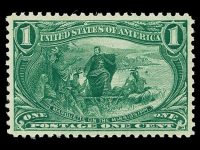

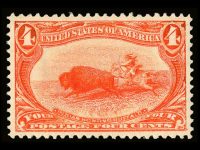

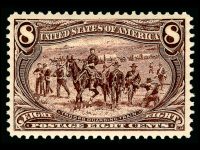
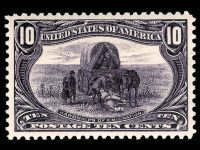
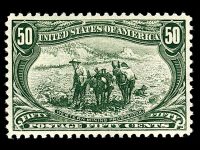
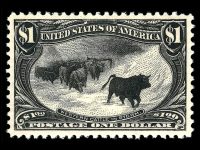
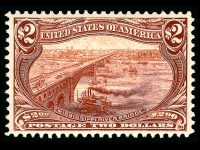











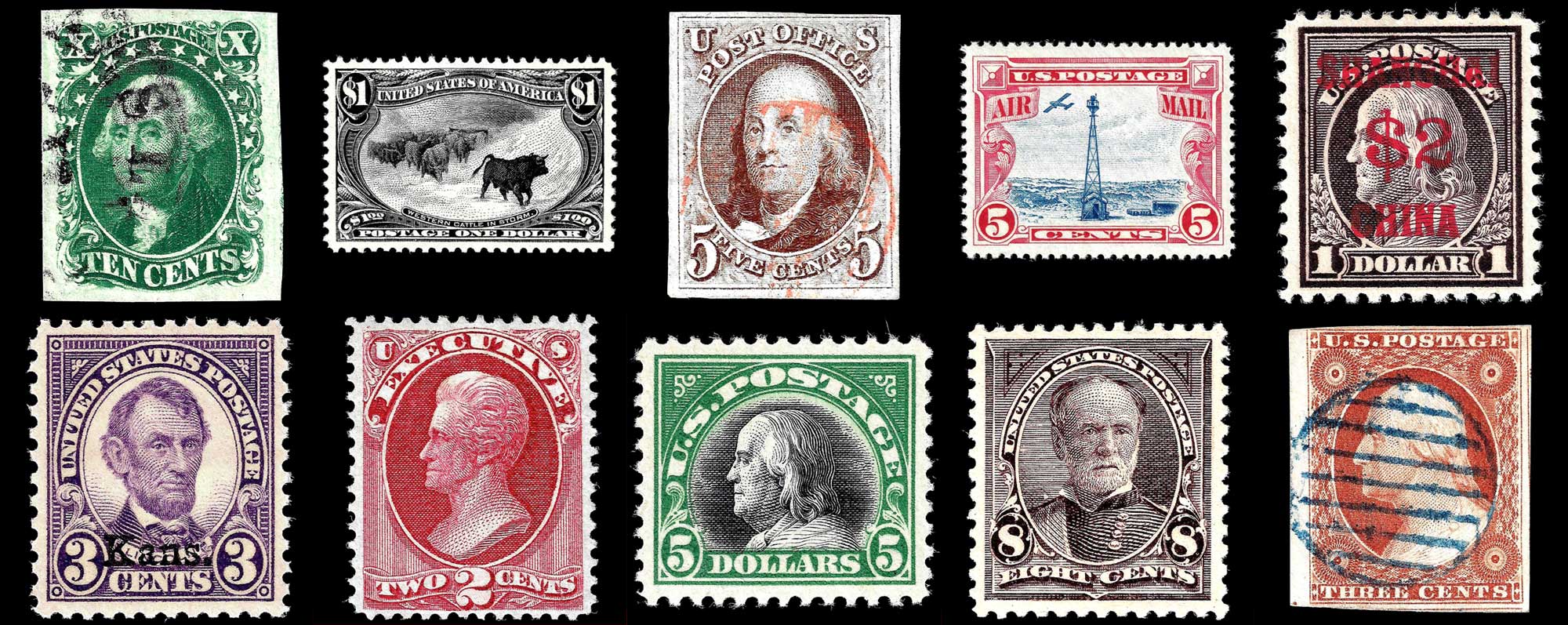
Ask A Question Or Leave A Comment